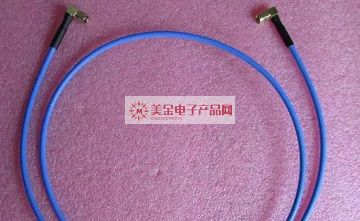Categorization:Product Information
Microwave and RF transmission line impedance matching is a technique commonly used in microwave and RF systems to optimize signal transmission. Impedance matching is the process of ensuring that the impedances between the signal source, transmission line, and load match each other in order to transmit signal energy to a greater extent and reduce signal reflections and losses. Microwave RF line is a special transmission line used to transmit high frequency electromagnetic waves. Microwave RF signals usually refer to high-frequency signals with frequencies in the range of several hundred megahertz to tens of gigahertz. These signals are widely used in communication, radar, satellite communication, radio and other fields. Microwave RF lines can be transmission media, such as coaxial cables, parallel lines, microstrip lines, etc., or transmission lines in microwave integrated circuits. The impedance of a transmission line is an important parameter in microwave and RF systems. The goal of impedance matching is to match the output impedance of the signal source to the characteristic impedance of the transmission line, and to match the characteristic impedance of the transmission line to the input impedance of the load. The main purpose of impedance matching is threefold: Higher power transmission: Impedance matching allows for greater transmission of signal energy to the load side, reducing signal reflection losses. When the output impedance of the source is matched to the characteristic impedance of the transmission line, the signal is able to fully enter the transmission line and is transmitted to the load side to a greater extent. When the characteristic impedance of the transmission line matches the input impedance of the load, the signal can be fully transmitted to the load, reducing reflections. Signal Quality Assurance: Impedance matching reduces signal distortion and attenuation during transmission. When the output impedance of the signal source matches the characteristic impedance of the transmission line, the signal has less reflection on the transmission line and the integrity of the signal waveform can be maintained. When the characteristic impedance of the transmission line is matched with the input impedance of the load, the signal can be effectively transmitted to the load side, reducing signal distortion. System Stability: Impedance matching can improve system stability and anti-interference capability. When impedance matching is good, there are fewer reflected signals on the transmission line, reducing interference to the source and load. This is critical for high frequency signal transmission in microwave and RF systems.

-About US dollars electronic products network platform related to the introduction and sales of products brief: US dollars electronic products network - a professional agent / production / sales of a variety of {connectors | wiring harness | wire and cable products }; if you have a related [connectors | wiring harness | wire and cable products] purchasing / sourcing needs or would like to buy / to understand which connectors | wiring harness | wire and cable products we can provide solutions, please contact the following Division I business personnel; If you have a related [connectors | wiring harness | wire and cable products] sales / resources and promotion needs, please click "→ Business Cooperation ←" to discuss with a person! If you have related [connectors | wire harness | wire and cable products] sales / resources and promotion needs, please click on the "¡¡ Business Cooperation ←" to discuss with a person!